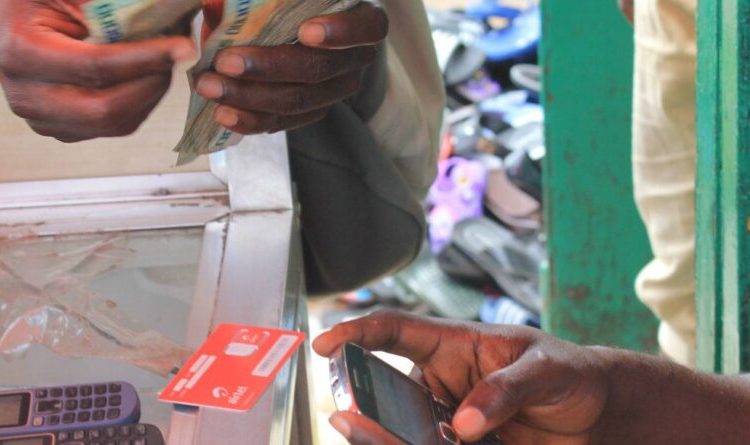FINTECH has revolutionalised banking activities globally over the past one decade so tremendously in both scale and scope.
In developing countries, it has brought banking within the reach of many hitherto disadvantaged cohorts of the populace, thus drawing them into the ever-widening circle of those having access to banking operations. It has also contributed significantly to wealth creation within the underprivileged populace, providing regular incomes and access to credit in many instances. Africa has opened up and started to benefit from this development for over a decade, although not all countries within the continent are equally exposed.
The fintech revolution has been riding on the digital transformation and innovations arising from the convergence of technologies. In this case, transformation in banking has met transformation from analogue into wireless telecommunications to deliver powerful services that provide bridge in distance and time, using portable devices known as mobile phones. This way, mobile money and mobile banking were born. Mobile banking involves using a bank’s app or USSD code for virtual banking activities, tied to your bank account. It is essentially a bank delivering its services through your phone, instead of you having to go to the bank branch. Although mobile banking involves using a bank’s app for virtual banking activities, tied to your bank account, mobile money is a virtual instrument of payment offered by telcos or fintechs, not traditional banks. It does not require a bank account. It may not be directly linked to your account. It is money that is mobile. But it is regarded as a legal tender. Mobile money is a wallet-based instrument. Your phone number (SIM) often doubles as your wallet account number. Both mobile money and mobile banking can be operated on phones that have interconnectivity. However, mobile money may not be operated on as many devices as in mobile banking. In fact, mobile money transactions can be done offline whereas mobile banking cannot be done offline.
It is important to know a bit about how they function. Mobile money stores money in a wallet; pays bills and airtime; sends and receives money, including across rural or unbanked areas. M-PESA was a pioneering mobile money platform in Africa. PESA means money in Swahili. Since its launch in Kenya in 2007, M-PESA has grown significantly as a mobile phone-based money transfer service, as well as payments and micro-financing service, powered by Vodafone and Safaricom, the largest mobile services providers. M-PESA has brought many business transactions in the informal sector into the mainstream economy in Kenya. Over the years, other instances of mobile money have sprung up. In Nigeria, there are now services like Opay, PalmPay, MTN MoMo, Airtel SmartCash, among others. Also in mobile banking, some examples in Nigeria include ZenithMobile, GTWorld and AccessMore.
For rapid inclusion and greater contribution in the mainstream economy, it is important that mobile money takes root in developing countries as it is designed for financial inclusion, making it easy for anyone with a phone — not necessarily a smartphone — to save, send and spend money. If there has been any platform that ensured financial inclusion in contemporary times, it is the platforms provided by these technologies.
Mobile money and mobile banking have transformed the economies of many countries in which they have become operational. Some compelling real-world examples of successful mobile-money models and their effectiveness in driving financial inclusion — particularly in rural areas and informal economies — are now in public domain.
M-PESA in Kenya enables deposits, transfers, bill payments, savings, and microloans. By 2012, it had registered about 17 million accounts in Kenya alone. The transaction volume and economic impact have been remarkable. In 2014, transactions via M‑PESA accounted for 45 percent of Kenya’s GDP, prompting the government to revise national GDP figures upward due to infusions from the informal economy entering formal digital flows. A GSMA report reveals that by the end of 2023, mobile money services — led primarily by M‑PESA — had lifted the GDP of countries with such services by $720 billion, equating to a 1.7 percent boost in GDP. Sub‑Saharan Africa alone saw an increase from $150 billion in 2022 to $190 billion in 2023.
Growth milestones in mobile money have shown significant rise. By 2024, mobile money, globally, reached 2.1 billion registered accounts and 514 million monthly active users, with transactions totaling $1.7 trillion — equivalent to $3.2 million per minute. Agent networks soared too, with 28 million registered agents in 2024, that is 20 percent more than in 2023, with 10 million active monthly. Clearly, these show the multiplier effects trailing M-PESA innovation and its transformative outcomes on the Kenyan informal economy as well as its role as the template for mobile money success across Africa.
In sub‑Saharan Africa, mobile money’s cumulative impact rose to $190 billion in 2023. In addition to basic payments, offerings such as credit, savings, and insurance are rapidly expanding. Credit services grew by 73 percent year-on-year in some regions. The foregoing examples illustrate how digital cash transfers via mobile platforms can spur inclusion and economic opportunity in marginalised areas. These models demonstrate how mobile money and mobile banking can transform access to formal financial systems for rural, informal, and low-income populations. The involvement of hundreds of millions now in mobile banking and mobile money ecosystems is translating into huge tangible economic gains, expanding into services like credit, insurance, and savings. Beyond Nigeria, more countries in Africa and beyond will benefit greatly by opening up their economies for growth and expansion through technology-enabled financial inclusion digital platforms.
Source: businessamlive

